Minimum Requirements for All RNS Laboratories. Unless a Faculty/Supervisor has completed a Hazards Assessment that can indicate otherwise, all laboratory personnel are to adhere to the following guidelines:
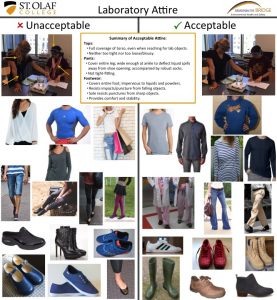
Recognizing that laboratory safety begins with the critical thinking and decision-making of the practitioner at the laboratory bench, think of your personal clothing as part of your personal protective equipment. Watch the short video and click to enlarge the poster, and then read the summaries of acceptable laboratory attire:
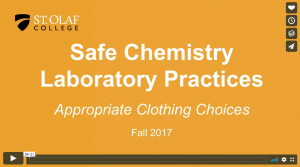
summary of acceptable laboratory attire:
Tops
- Full coverage of torso and shoulders, even when reaching for lab objects or lifting your arms overhead. Do not wear open-backed shirts, bare midriff shirts, etc.
- Neither too tight nor too loose/blousy. Tops that are too tight offer no barrier between you and the chemical with which you are working, and chemicals can easily wick through and contact the skin.
- Short-sleeve shirts are acceptable but may require a lab coat in certain settings.
Pants/Long Shirts
- Cover the entire leg; wide enough at the ankle to deflect liquid spills away from shoe opening.
- Shorts and skirts that do not completely cover the leg are inappropriate apparel in the laboratory and are not permitted.
- Do not wear leggings/yoga pants or similar tight-fitting pants since they offer no barrier between you and the chemical with which you are working, and chemicals can easily wick through and contact the skin.
- Looser-fitting jeans, khakis, or even medical scrubs are preferred.
- Consider the clothing material as it relates to the potential hazards. For example, do not wear synthetic fibers (which are generally quite flammable) when working with highly flammable substances. If wearing such clothes while working under such circumstances then a flame-retardant lab coat should be worn.
Footwear
- Low-heeled shoes with fully closed tops/heels must be worn in laboratories, regardless of the work that is occurring.
- Material must be impervious to liquids and powders; resist impacts/punctures from falling objects; and provide protection from materials potentially hidden in the toe space along bench areas.
- Sole resists punctures from sharp objects.
- Provides comfort and stability; do not wear high-heeled footwear to lab.
- Faculty or departmental staff who observe others wearing inappropriate footwear have the authority to tell the individuals to change their shoes before being permitted to work in the laboratory.
Items That Can Become Entangled
- Clothing/Jewelry with considerably loose portions, such as loose necklaces/bracelets, open sweaters, baggy cuffs or sleeves, or hanging scarves are not lab appropriate since they may catch on glassware and equipment, may drag through spills, and in some cases may be a fire hazard.
• If you wear loose clothing for cultural or religious reasons then please let us help you to determine how best to secure the clothing in a reasonable manner that allows for safe work in the laboratory. - Loose long hair (i.e., longer than shoulder length) needs to be tied back so that it does not become entangled with equipment, exposed to chemicals, or provide an impediment to vision.
Jewelry, etc.
- It is best to not wear any jewelry while in a laboratory. Chemicals can become trapped under the jewelry and cause injuries to the skin. Jewelry can also conduct electricity.
- Avoid wearing synthetic fingernails in the laboratory. Synthetic fingernails are made of extremely flammable polymers that can burn to completion and are not easily extinguished.
Contact lenses
- Contact lenses do not provide a protective barrier for your eyes. If you are wearing contact lenses you must still wear the appropriate eye protection.
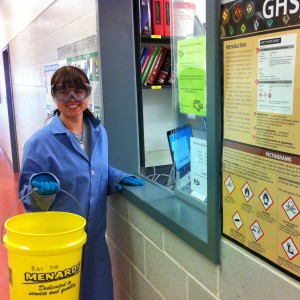 Employee Responsibility
Employee Responsibility
- It is the responsibility of each employee to wear the PPE as necessary.
- The Laboratory Supervisor will conduct periodic assessments of laboratory workplaces to determine if hazards are present, or are likely to be present, which necessitate the use of personal protective equipment (PPE).
- If such hazards are present or likely to be present, the Laboratory Supervisor (in consultation with the CHO) will select the type(s) of PPE, Administrative Controls, Engineering Controls, etc. that will for protection from the hazards.
Eye Protection/Chemical-Resistant Splash Goggles
- Chemical splash resistant goggles that are indirectly vented (conforming to ANSI Z 87.1-2010 or later Occupational and Educational Personal Eye and Face Protection Devices) must be worn by all individuals (including visitors) if any of the following conditions exist:
- Hazardous substances are in use.
- Hazardous substances are not stored behind closed doors in designated cabinets (i.e., containers sitting on countertops; bottles being transported, etc.).
- Performing procedures that involve an open flame or sparks.
- Using equipment that is under sufficient negative or positive pressure as to create a risk of flying material should the container break (a portable safety shield is also required in such circumstances). These ANSI Z87.1-rated chemical splash resistant goggles are also impact-resistant, so the same goggles that you use for chemical safety can also be used for these procedures.
- The St. Olaf Bookstore sell such goggles. If these goggles do not provide a satisfactory fit then you can purchase goggles from a number of commercial distributors. Please contact the Chemical Hygiene Officer or your course instructor if you have questions.
- Chemical splash goggles do not need to be worn if the Laboratory Instructor/Supervisor or Department has concluded that no chemical hazard exists. Each department maintains a list of laboratories/lab sessions that meet this requirement.
- Face Shields. For more hazardous chemicals, such as concentrated corrosives and hot chemicals, both face shield and chemical splash goggles may be required by lab supervisors.
- Contact lenses do not provide a protective barrier for your eyes. If you are wearing contact lenses you must still wear the appropriate eye protection.
Gloves
- Nitrile Gloves. Disposable nitrile gloves are provided for all users, but you must wear gloves that are known to be resistant to permeation by the substances in use.
- Heat or Cold-Resistant Gloves. Such gloves must be used if handling containers that are hot or cold enough to damage one’s hands on contact.
- Compatibility. To ensure that you are wearing a glove that has the appropriate degradation and permeation characteristics it is best to consult the compatibility charts for the manufacturer of the glove being used.
- The University of Florida maintains a list of glove compatibility charts: http://www.ehs.ufl.edu/programs/lab/chp/gloves/.
- Cole-Parmer maintains a searchable database to determine which glove is acceptable for a particular chemical: http://www.coleparmer.com/SafetyChemGuide.
- Glove Use
- Inspect the gloves for defects before wearing (inflate by whipping in air, not by mouth inflation) and periodically during use.
- Replace damaged or contaminated gloves immediately.
- Prevent unintentional contamination of laboratory equipment, doorknobs, telephones, etc.
- Do not wear used/contaminated gloves in public spaces; remove such gloves before exiting the laboratory (put on new gloves if they are necessary while transporting items through public spaces).
- Remove your gloves before operating laboratory computers, instrumentation, etc.
- How to Remove Gloves. Watch this short video to learn the correct way to remove gloves.
- Discard used gloves in the appropriate waste container.
Ear Protection
- Must be worn if employees are subjected to sound levels exceeding those listed in Table D-2 in 29 CFR 1926.52.
Respiratory Protection
- There are no situations where the use of air purifying respirators are needed for working safely in RNS laboratories. If the use of a respirator was ever necessary to maintain exposure below Permissible Exposure Limits, St. Olaf College will provide, at no cost to the employee, the proper respiratory training and equipment as per 29 CF 1910.134, and outlined in the the St. Olaf College Respirator Protection Program.
- Wash immediately and thoroughly if a chemical has contacted the skin.
- Do not handle your contact lenses while in the laboratory, and handle them outside of lab only after thoroughly washing your hands.
- Do not wipe your hands on your pants, shirt, or lab coat; use a paper towel.
- Food, tobacco, cosmetics:
- Never eat, drink, chew gum, smoke, or apply cosmetics in laboratories or chemical storage areas.
- Food, beverage, or tobacco products are not allowed in laboratories or chemical storage areas. Food, drink, and especially tobacco absorb chemical vapors, particulates, and gases from the air.
- Avoid placing your pen/pencil in your mouth — you might unwittingly ingest chemicals!
When and How to Wash Your Hands. Follow the instructions on these two slides:
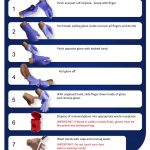
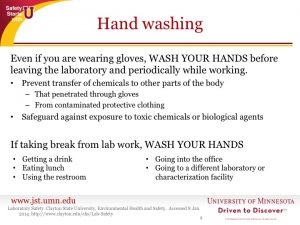
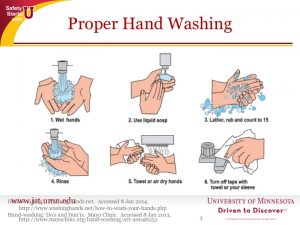
You must be logged in to post a comment.